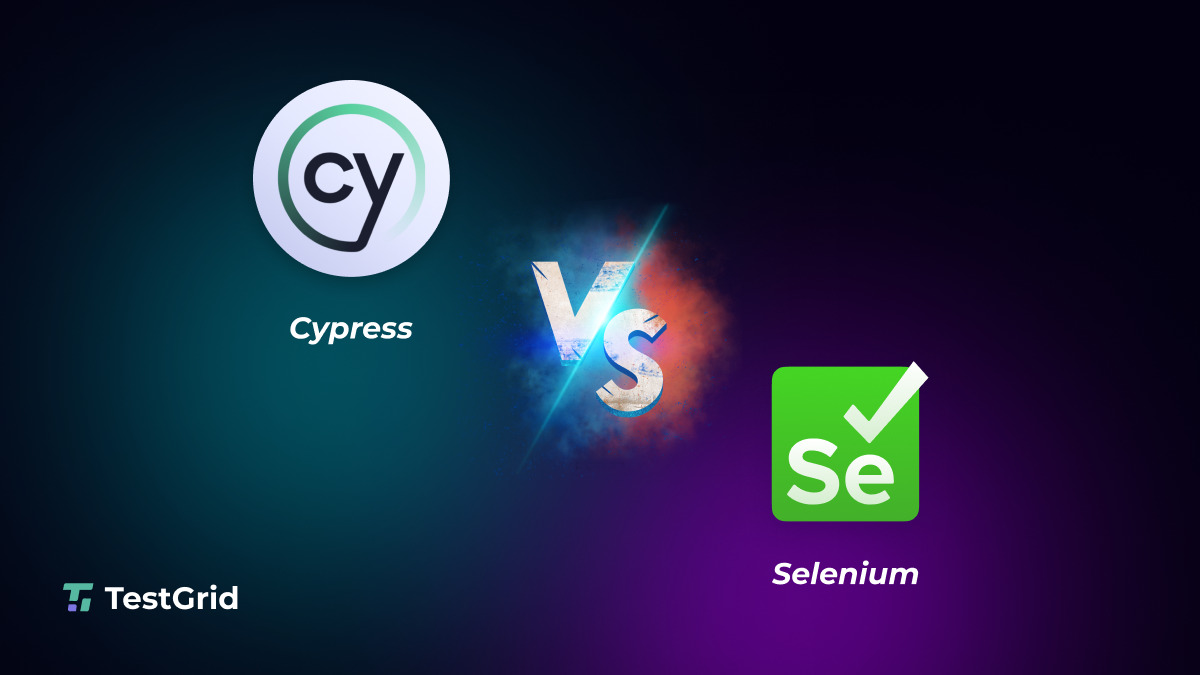Selenium vs Cypress: Which Browser Testing Tool Should You Choose?
With user expectations for flawless digital experiences higher than ever, automated browser testing has become a cornerstone of quality assurance. Among the popular tools in this domain, Selenium and Cypress consistently lead the conversation. Each offers distinct advantages, from the flexibility of using XPath in Selenium for locating elements to the faster execution model of Cypress. The right choice depends heavily on your team’s tech stack, testing goals, and need for speed, scale, and cross-platform coverage.
In this blog, we compare Selenium and Cypress across critical criteria to help you make the most informed decision for your testing strategy.
What Is Selenium?
Selenium is an open-source browser automation framework that supports multiple programming languages (Java, Python, C#, Ruby, etc.) and works across all major browsers. It’s been a staple in the test automation space for over a decade and is well-suited for comprehensive, cross-browser compatibility testing.
Key Features:
- Supports all major browsers: Chrome, Firefox, Safari, Edge, and IE.
- Language flexibility: Write tests in a language of your choice.
- Distributed testing: Selenium Grid allows parallel test execution across machines.
- Strong ecosystem: Large community, plugins, and extensive documentation.
- Mobile support: Integrates with tools like Appium for mobile testing.
When Selenium Works Best:
- You require broad cross-browser testing.
- Your team needs to code tests in different programming languages.
- You’re testing on a diverse infrastructure across desktop and mobile.
- Your test cases are complex and require detailed control.
What Is Cypress?
Cypress is a modern, JavaScript-based end-to-end testing framework built specifically for web applications. Unlike Selenium, Cypress runs directly in the browser using a unique DOM manipulation model, making tests faster and more interactive.
Key Features:
- JavaScript-based: Integrates seamlessly with modern frontend stacks.
- Runs inside the browser: Provides real-time interaction with the application.
- Automatic waiting: Handles waits and retries without manual coding.
- Screenshots and videos: Captures test runs for easy debugging.
- Live reloading: Updates tests instantly as changes are made.
When Cypress Works Best:
- You want quick feedback loops during development.
- Your team is focused on JavaScript-based apps.
- You are testing in Chrome, Edge, or Electron environments.
- You prefer a developer-centric tool with intuitive setup and APIs.
Comparing Selenium and Cypress
| Feature | Selenium | Cypress |
| Programming Language Support | Java, Python, C#, Ruby, JS | JavaScript only |
| Browser Support | Chrome, Firefox, Safari, IE, Edge | Chrome, Edge, and Electron only |
| Mobile Testing | Yes, via Appium | No native support |
| Architecture | Runs outside the browser via WebDriver | Runs inside the browser |
| Cross-Browser Testing | Fully supported | Limited |
| Parallel Testing | Yes (Selenium Grid) | Limited without external setup |
| Debugging Tools | Requires integration | Built-in with screenshots/videos |
| Learning Curve | Steeper | Beginner-friendly |
| Test Execution Speed | Moderate | Fast |
| Community Support | Large and mature | Growing |
Choosing the Right Tool: Factors to Consider
- Browser and Platform Coverage
If you need extensive cross-browser support, including legacy browsers or mobile platforms, Selenium is a better fit. It also integrates well with mobile automation tools, making it versatile for both web and app testing. - Language and Team Skillset
Selenium allows your QA and dev teams to write tests in multiple languages. Cypress restricts you to JavaScript, which may or may not align with your existing tech stack. - Performance and Speed
For quick feedback and rapid iterations, Cypress has an edge. It’s tightly integrated with the browser and supports real-time reloads and debugging. - Ease of Setup and Use
Cypress offers a smoother onboarding experience, especially for frontend developers. Selenium, while more powerful and customizable, demands more setup and configuration. - Integration with CI/CD
Both tools integrate with modern CI/CD pipelines, but Cypress is often preferred for frontend testing workflows due to its developer-centric design.
Limitations to Watch Out For
Selenium Drawbacks:
- Requires third-party integrations for test stability (waits, retries).
- Slower test execution due to out-of-browser architecture.
- Steep learning curve for beginners.
Cypress Drawbacks:
- Limited to Chromium-based browsers.
- Doesn’t support native mobile testing.
- Lacks support for multi-tab or multi-window scenarios.
Best Practices for Browser Testing
- Combine tools when needed: Use Cypress for early-stage development and UI testing; switch to Selenium for broader browser and platform validation.
- Run tests on real devices when possible to simulate real-world behavior, especially when validating performance and user experience across browsers and geographies.
- Adopt parallel and distributed testing to reduce test cycle times.
- Use rich test data and network simulations to mirror production environments accurately.
Conclusion: Real-World Testing Demands Real-World Conditions
Choosing between Selenium and Cypress depends on what your testing goals are today, and where you want to scale tomorrow. Cypress is ideal for fast, local testing in a controlled environment with Chromium browsers. Selenium, with its broader coverage and language support, is best for cross-browser, enterprise-grade applications.
For teams seeking to move beyond synthetic test environments and validate real user experiences at scale, HeadSpin offers a powerful alternative. With global access to real devices, remote browser testing, detailed performance metrics, and AI-driven issue detection, HeadSpin enables teams to test across platforms, networks, and geographies, all with the fidelity of real-world conditions. From debugging visual issues to ensuring optimal performance under load, HeadSpin helps bridge the gap between automation and experience.







